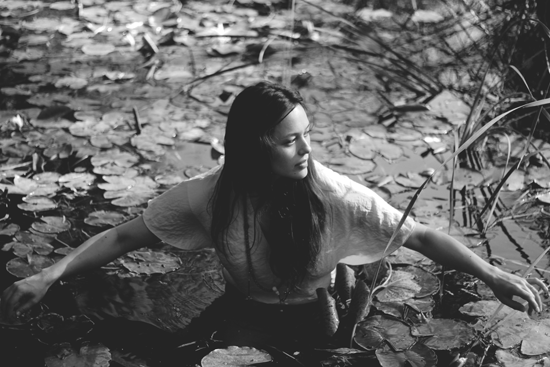
The daughter of ardent Tibetan Buddhist practitioners, Marstrand, 32, had yet to bring her religious beliefs into her music—her three prior albums Bodega Rose [2008], Hello Night [2009], and Our Myth [2011] swing from dour love song to saccharine lullaby to gripping lament. Tricycle spoke with Marstrand about her choice to record a Buddhist album and how she views the intermingling of artistic expression and religious practice.
What inspired you to make such a characteristically Buddhist album? This was an unexpected project. It began about a year ago when a friend asked me to compose a melody to the mantra Karmapa khyeno. The idea intimidated me, but I wanted to try. I’ve always had a deep love of Tibetan mantra and chant melodies, and I was interested in exploring them with my own voice. It was a challenge—approaching something traditional and Buddhist brought up all kinds of fear because it felt like walking on sacred ground. Still, in any kind of creative work it’s only a matter of time before every aspect of your life finds expression in some way, so this came up and it felt natural to follow. It took me a year to create something that I felt ready to share.
Tell me about your background in Tibetan Buddhism. Both of my parents are Tibetan Buddhists, as is most of my family on both sides. My father has been translating dharma teachings since the 1970’s. In fact, I was born at Karma Triyana Dharmachakra monastery in Woodstock, NY because, during the several years that my father spent translating for Khenpo Karthar Rinpoche [senior lama in the Karma Kagyu tradition], our family lived on the grounds of the monastery. Basically, I’ve been immersed in Buddhism my whole life.
I started to study and practice meditation when I was 16, and had the opportunity to spend time at Bokar Monastery in India, as well as the chance to visit Bodhgaya and Dharamsala. Kyabje Bokar Rinpoche [lineage master of both the Shangpa and Karma Kagyu traditions] became my teacher and had a tremendous impact on my life.
The album is rather short—clocking in at 21 minutes. It reminds me of Edgar Allen Poe’s maxim that a short story should be read in one sitting. In listening to this album in a single sitting, it feels like a ritual in and of itself—one we can complete amid the busyness of our lives. Was this your intention? In the beginning I was only going to record one track, so it actually ended up being a lot longer than I had planned. One by one, other melodies and ideas came and then it started to become its own little world. At some point, as the recording was taking shape, I could tell it would run around 20 minutes and that felt right. It was unintended but the length definitely became a major part of the feel of the recording. I often think of music in terms of space or terrain; and, for this album, I had this sense of these wide landscapes in Tibet. Now that I’ve completed the album, I like to think of it as this vast landscape that appears only briefly
Your only prior song having to do with Tibet was “Tibet Will be Free,” a track reminiscent of old protest songs like those of Joan Baez. After that, you recorded a version of Tunisia’s national anthem, “Humat al Hima,” which became very popular during the country’s uprisings in the spring of 2011. Is there any connection between these political songs and the devotional tracks found on your new album? I recorded both “Tibet Will Be Free” and “Humat al Hima” as attempts to find the stillness in a time of upheaval. I was in Dharamsala in 2008, when the entire city shut down in solidarity with the demonstrations inside of Tibet—it was very powerful. Similarly, in Tunisia during the revolution, I remember going home after protesting in the streets with thousands of people and still carrying this sense of solitude. In some way, I’m naturally drawn to the loneliest perspective. I think the most significant connection between this album and those two songs is that sense of solitude and longing.
You once said that you felt your entire first album, Bodega Rose, was about different forms of reconciliation. The songs on that album go into the depths of lovesickness and the hope of newfound connection. How do you reconcile those extreme emotional states with the equanimity taught in Buddhism? This reminds me of the analogy of the mind being like the ocean and thoughts being like the waves. The practice, then, is to identify more with the ocean. I’ve always loved this image. Even big, crashing waves are nothing compared to the enormity of the ocean itself, so it renders our thoughts and emotions real yet ephemeral. Seeing my own emotions like this, even if only momentarily, is what makes it possible for me to express what I feel through music.
Thank you for subscribing to Tricycle! As a nonprofit, we depend on readers like you to keep Buddhist teachings and practices widely available.